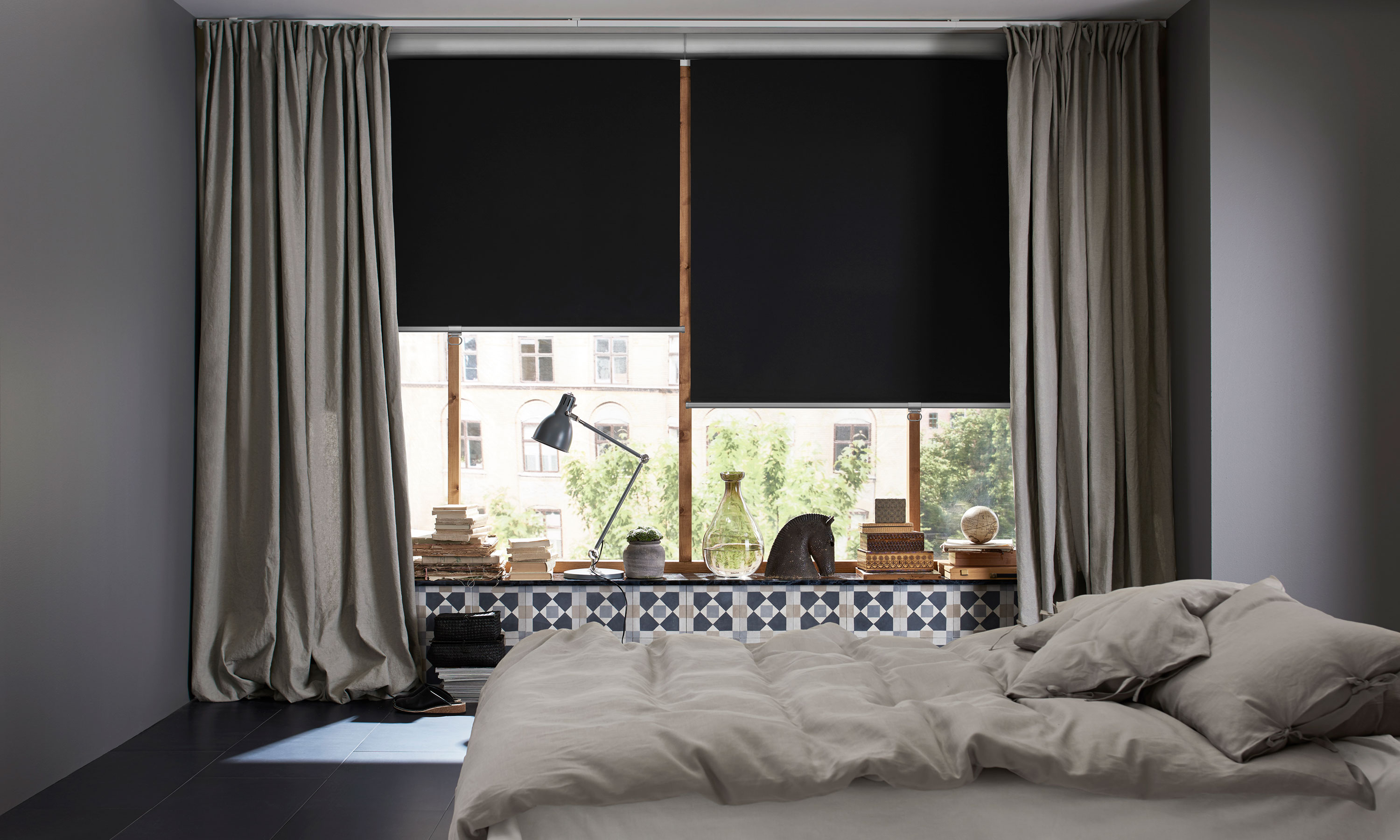

If it's the first time you’ve ever changed curtains or if you’ve recently renovated and are now looking at a bare window only to wonder how to dress it properly then it may come as a surprise to you just how many different types of window treatments there actually are.
There are lots of style considerations to factor in when it comes to defining this part of a room, but function is one of the most important parts of choosing window dressings too. No matter what types of windows you have, you’ll be able to find the most suitable window treatments to keep your privacy intact, drafts in check and of course to add personality to your space also.
'Window treatments are essential to the style and over feel in any room – they’re functional design elements, which is why it’s so important to make sure you choose the right products to really complete and enhance your space.' Says Kelsey Stuart, CEO of Bloomin’ Blinds.
What different types of window treatments are there?
Window treatments come under a few different types. 'At a very basic level, all window treatments can be broken down into four types: shades, drapes, blinds and shutters.' Adds Stuart.
Know your needs
‘Before browsing styles, it’s important to think about your requirements. Do you need both privacy and natural light? Better window insulation? A design for an awkwardly shaped window? All the answers will factor into your decision.’ Says Julia Dorn, executive director-new product development for Graber. ‘Decide if you’d like your window treatment to be a focal point or subdued in your room, and look at whether your room is grounded in warm or cool hues, once you collect that information, you can successfully apply color, pattern and texture.’
Different types of materials for window treatments
When looking at fabric you want to consider how different materials will fall and look but also, how they will perform in terms of filtering light, insulation and even withstanding general wear and tear plus, cleaning. If you want to block out light completely, choose blackout options with heavier soft materials or go for hard materials like wood and aluminum. For a softer look with dappled light you can choose light cottons, even bamboo, for something in between.
Andre Kazimierski CEO of Improovy says, 'Window treatments are divided into two categories: hard and soft. Hard treatments include shades, shutters, blinds, and anything else made of hard materials; soft treatments include curtains, drapes, roman shades, valances, and anything else made of soft materials.'
'As so many people are working from home right now, we are seeing warm minimalism emerge as trendy in home decor. To fit this style, options like roman shades and curtains which can allow more natural light into the home are preferable. In your bedroom, opt for a window treatment that can allow for more light-blocking. Blackout shades or wooden blinds can help keep your room dark when you are trying to sleep. I would also recommend light-blocking window treatments in rooms with direct sunlight if your house gets hot in the summer as a way to keep down your AC bill.'
Cellular Shades
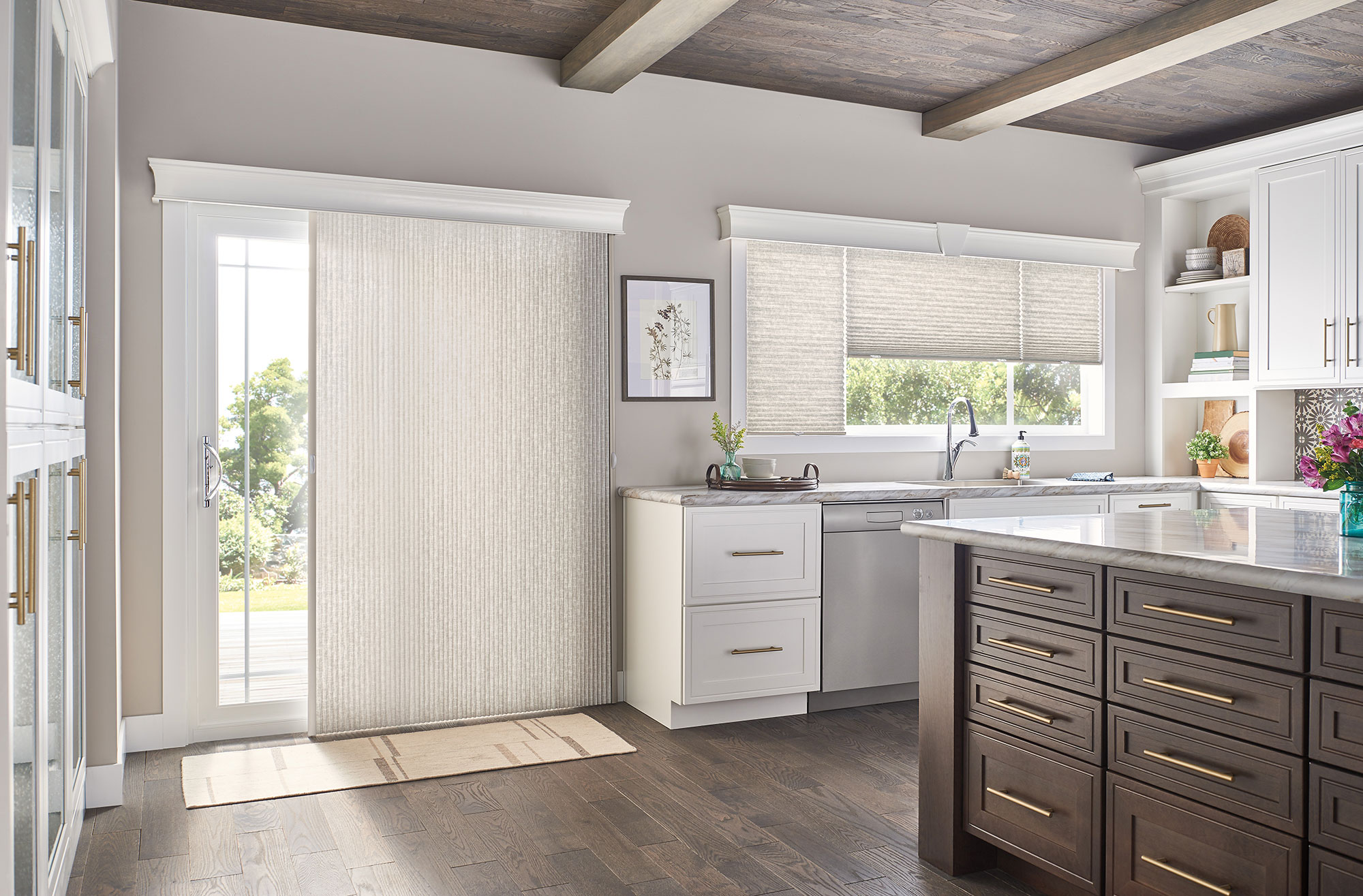
Also known as honeycomb shades, cellular shades are the most energy efficient option, offering superior insulation and complete with a lovely clean cut design to suit all styles. They are one of the best living room window treatment ideas and are sure to keep bills down too.
'A good option for those looking to conserve energy. Cellular shades are best known for their temperature regulation and can contour to any non-traditional window shapes such as arched windows or skylights. The shades range in opacity levels, giving the option for either a blackout or light-filtered look.' Notes Dorn.
Roller shades
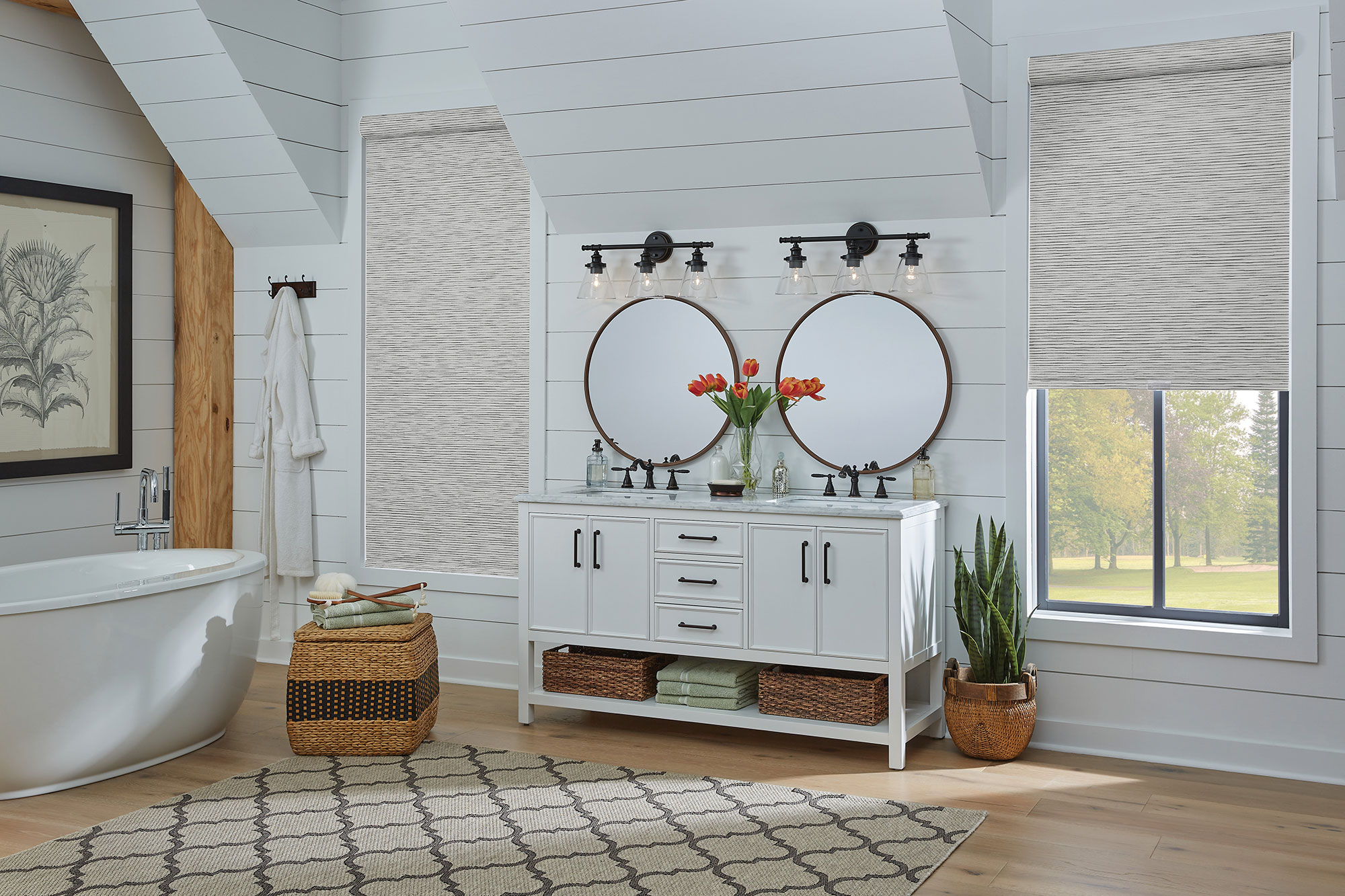
Roller shades can look great on their own but also look lovely with soft curtains over the top. 'An elegant, yet colorful option ideal for extremely wide windows. Roller shades also vary in opacity and can be paired with additional window treatments such as drapes or solar shades, with the latter offering protection against glare and UV rays.' Adds Dorn. You'll also find different materials to choose from, ranging from block-out to bamboo and grass.
Plantation shutters
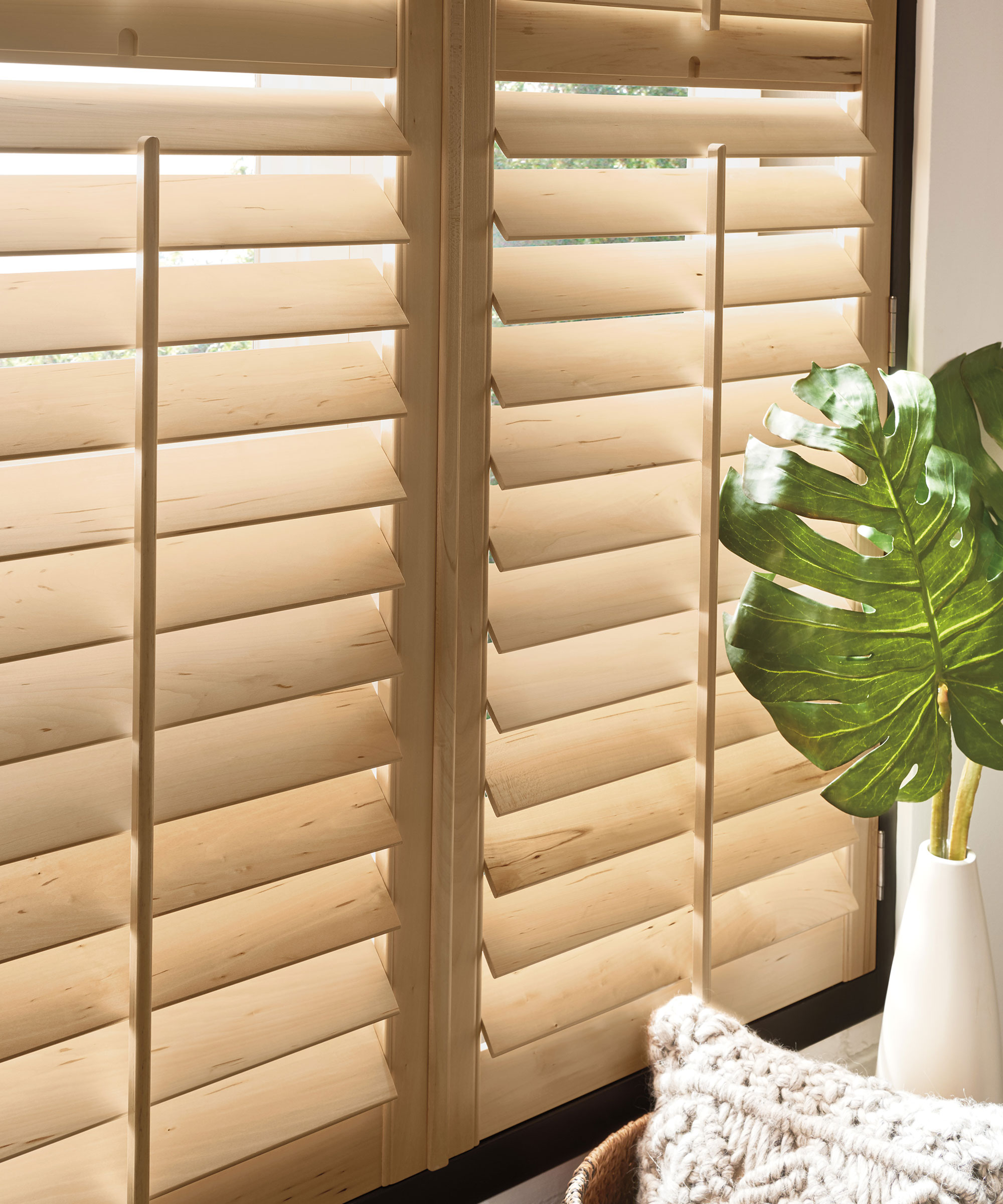
If control of natural light is a must then shutters are a great idea. Plus, in the summer you can keep costs of air conditioning down with these installed. 'This premium window treatment can add value to any home through its timeless design, handcrafted details, styling versatility and intuitive ease of use. Wood shutters are available in a variety of styles and widths to fit the size and shape of various windows or doors.' Says Dorn.
Plantation shutters are also said to increase your home's value, 'These are classic, and still widely considered the crown jewel of window treatments. In the industry, we often refer to plantation shutters as furniture for your windows – they really add to the perceived value of a house and elevate the look of any room. Shutters have hinges that allow them to swing open and closed and the louvered body of the shutter allows for subtle control of the light and privacy.' Notes Stuart. Allowing for different control options all while adding classic beauty to your surroundings.
Wood blinds
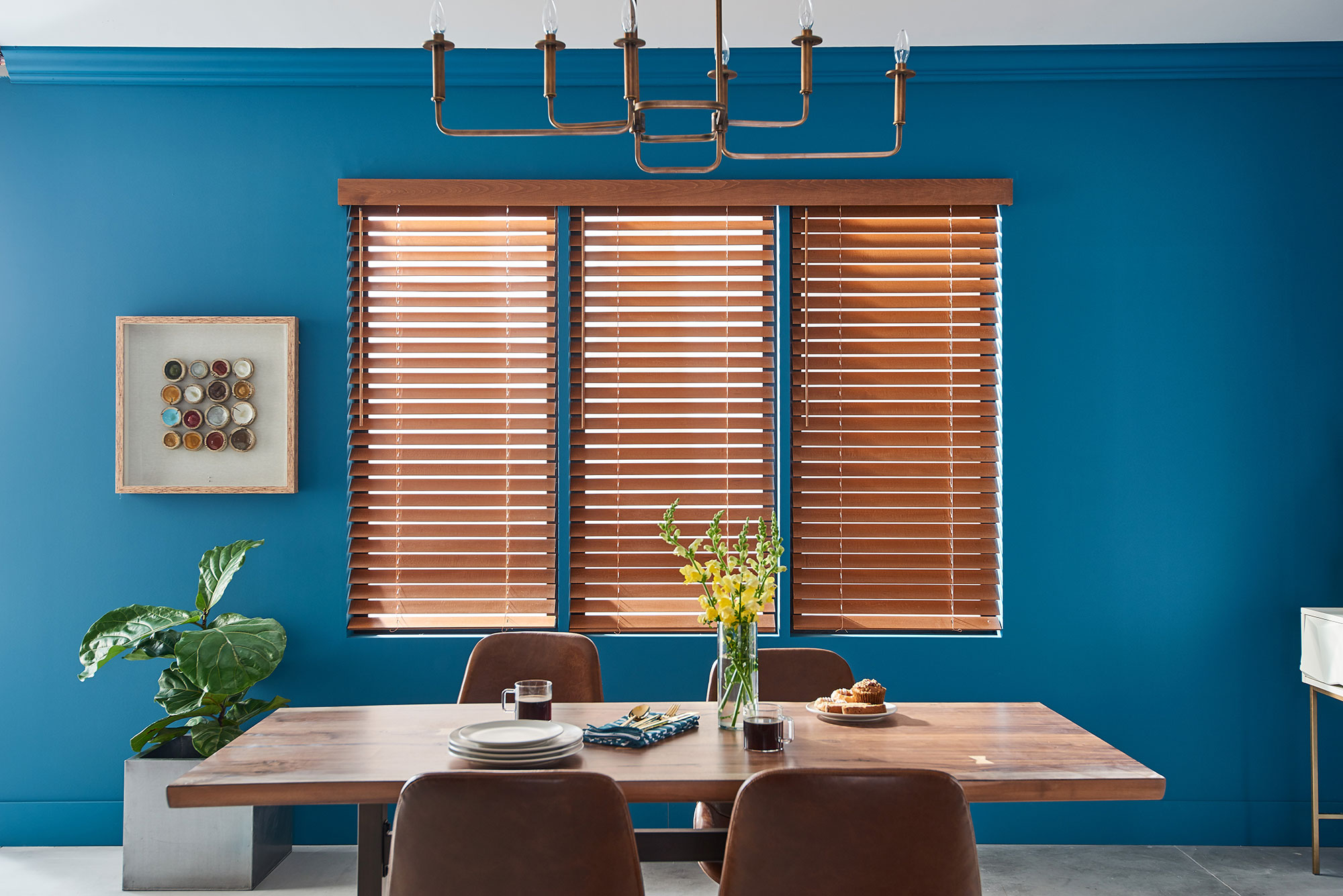
If you like to stick to natural materials, wooden blinds will work beautifully in all areas of the home. Plus, they call for maximum privacy and you can stain or paint your blinds however you'd like. If you want to get rid of the cord, most are now available motorized too.
Pleated shades
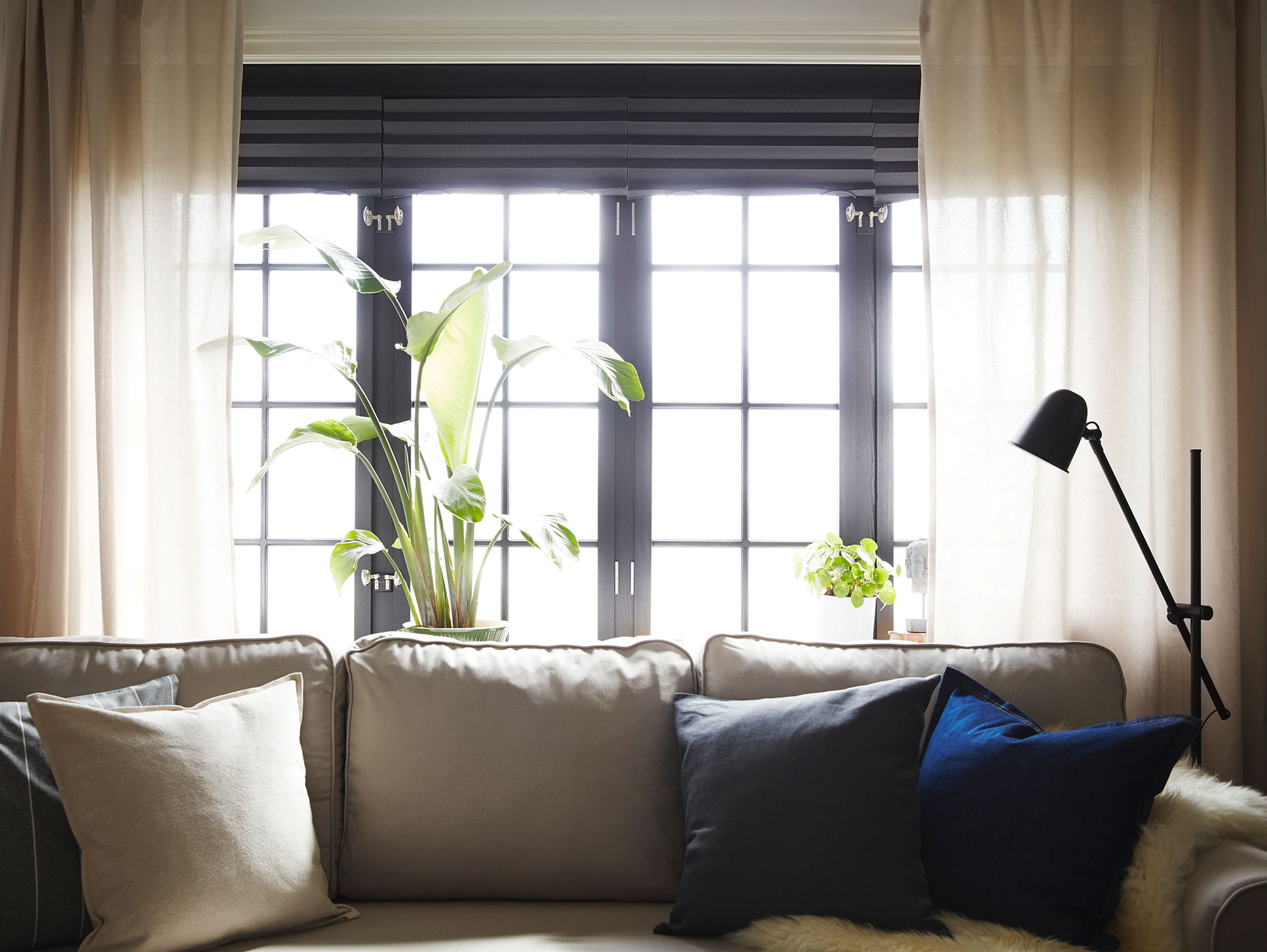
Pleated shades like Schottis from Ikea give a crisp finish to a space for a modern touch, especially in this lovely charcoal gray color. Choose a blackout design for bedroom windows to stop street and moonlight disturbing your sleep.
Roman shades
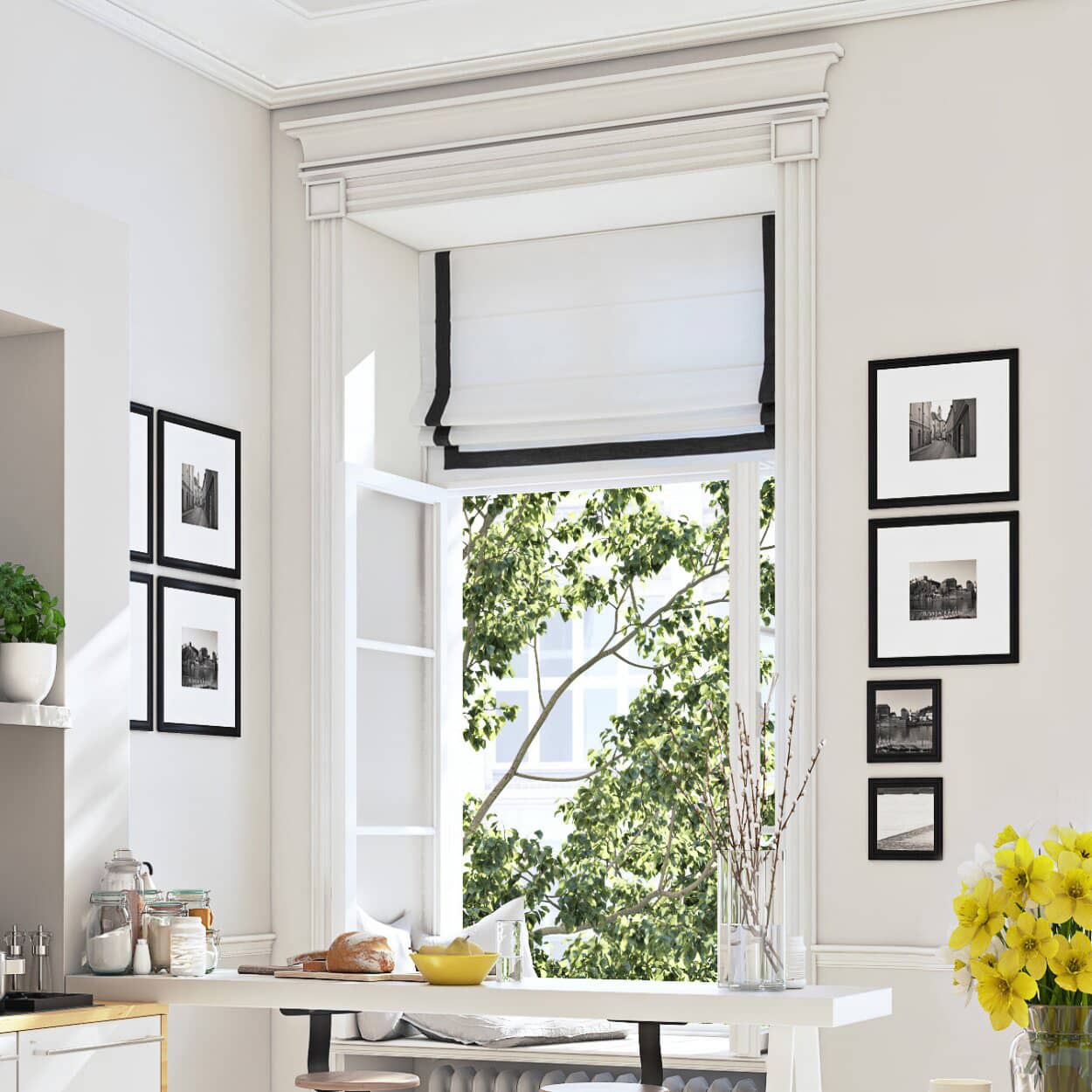
Roman shades are definitely one of the most popular types of window treatments around. Consisting of a single piece of folded or pleated fabric. Many are colorful to add a pop of color but you'll also find lots of neutral colored options to give a space a soft, romantic look. They work great in most rooms and are really complementary to bay windows in particular.
'Also known as, drapery with strings, roman shades have made a significant comeback in the last couple of years. Functional and decorative, roman shades allow for people to customize them since they come in a wide variety of colors, patterns and textures with the functionality of raising and lowering.' Says Stuart.
You can actually find lots of roman shades now motorized also. 'Motorization is huge right now, and likely due to many people installing more smart technology into the home. Motorized window treatments are an extension of that, and are extremely popular for main living areas, allowing for simple control of many windows all at once. We’ve also seen an uptick of people requesting that we install and set up their motorized window treatments on a timer, which is great for bedrooms and living areas as they operate at specific times to let the morning light in or close down at the end of the night.'
Mike Kanota of ShabbyChicHouse is also a big advocate of motorized shades for superior functionality. 'Romans shades work well in bathrooms, master bedrooms, family rooms or any area where you might want to put a premium/high-end looking blind.'
Drapes
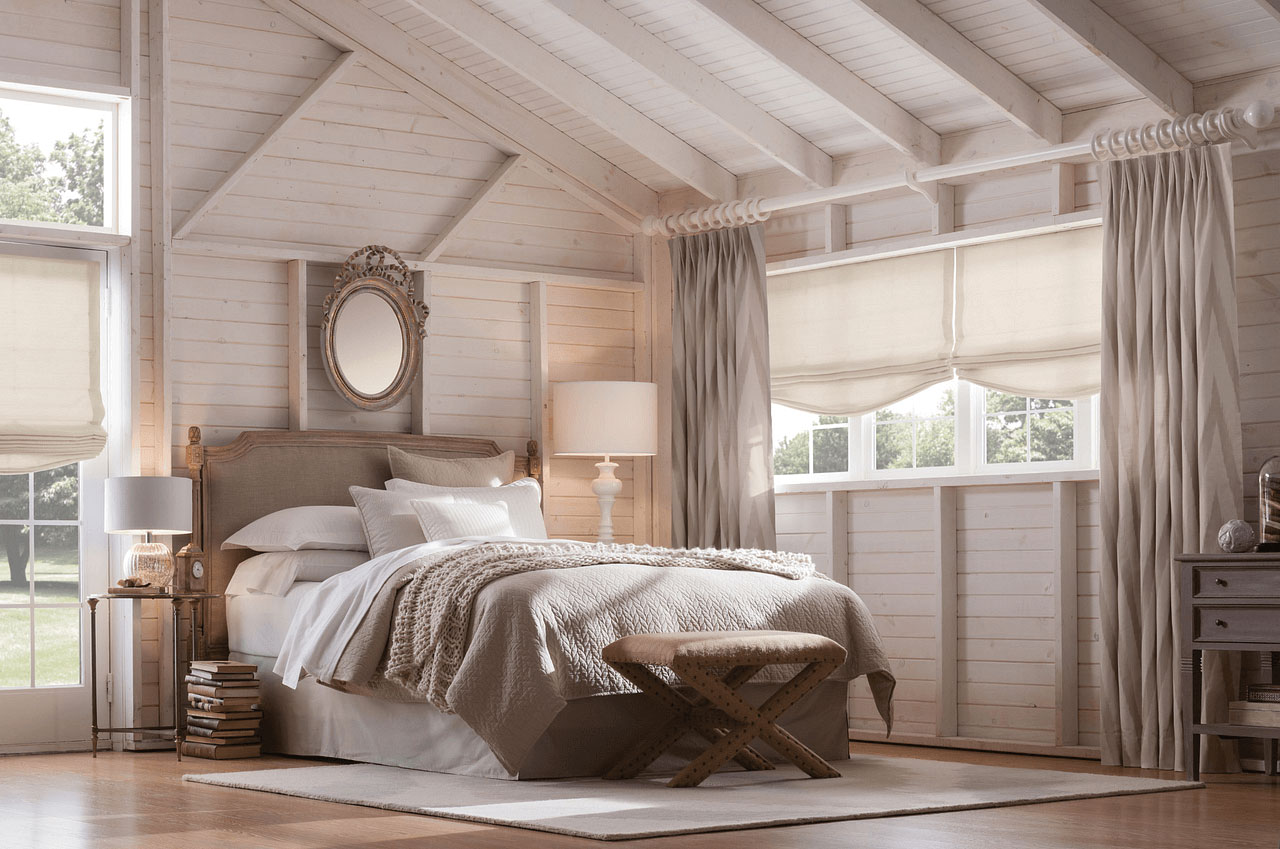
Drapes always feel a little more luxurious as they hang over windows. There are lots of different types of drapes, ranging from wide width sheer drapery and pinch pleat, to panels that are usually thicker with a better chance at blocking out light also. Custom drapery will let you create a unique look for your room, whether used solo or paired with blinds/shades to further elevate a living room or bedroom space.
Curtains
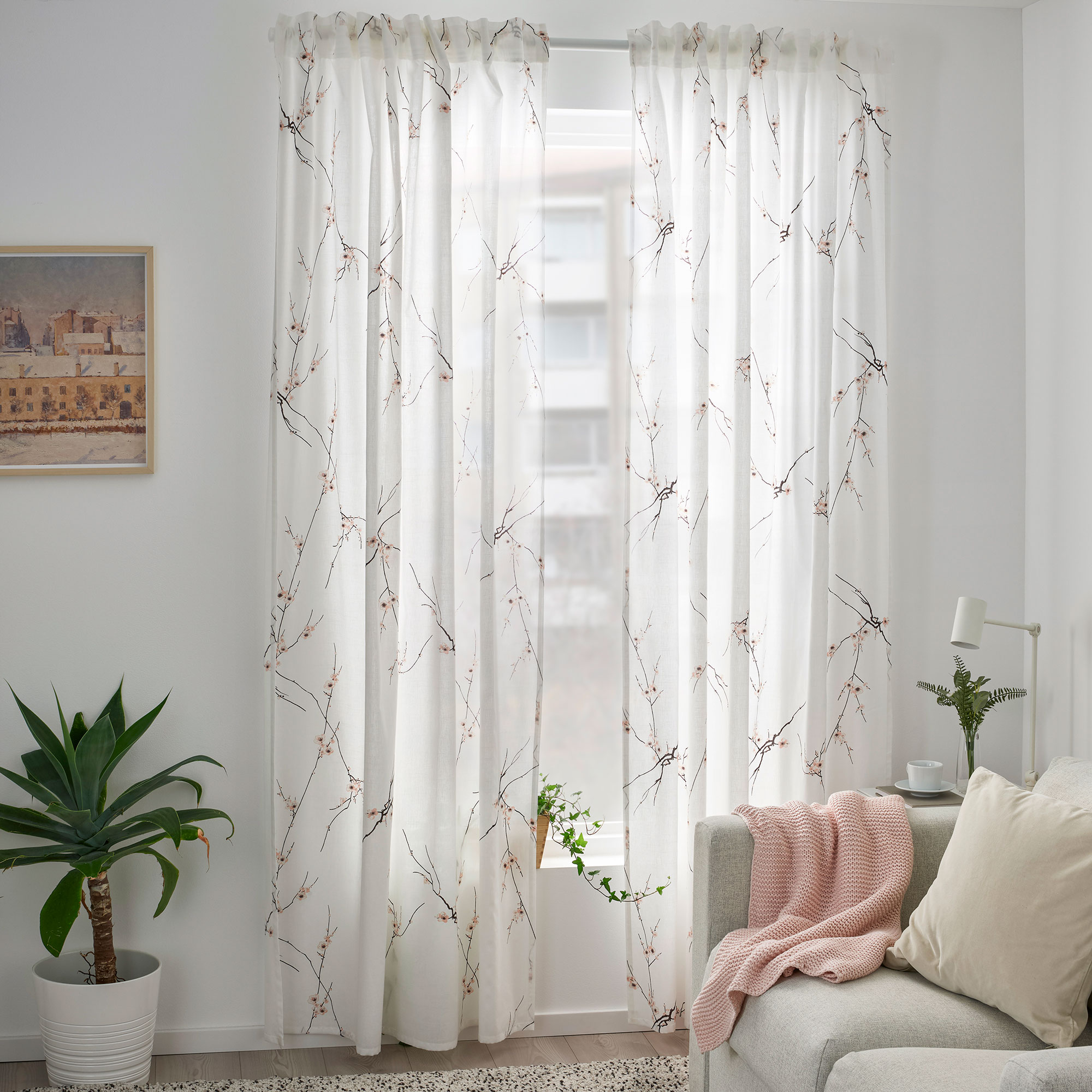
A classic type of window treatment, curtains work well with most window types and are usually made of a lighter fabric than drapes. Often teamed with blinds or shades also for better functionality. A subtle design like in the Rödlönn from Ikea will complement most decor styles.
Harry Cole, Founder of independent soft furnishings brand Loom & Last highlights the different types of curtain styles to look out for:
What are eyelet curtains?
'Eyelet curtains are hung directly onto the pole through the metal rings sewn into the curtain. Eyelets create a deep, even, and natural fold that give a contemporary finish to any room.'
What are pencil pleat curtains?
'Folds of fabric are gathered tightly together that resemble the size of a pencil, hence the name. This type has small discreet hooks attached to the back on the curtain which is then hooked to the curtain pole.'
What are the best fabrics for summer curtains?
'The primary use of blackout curtains is to obstruct the direct sunlight streaming through the windows, which makes them an ideal choice for the bedroom when the sun rises from as early as 4am during the summer. Great for all seasons, but especially the warmer months as blackout curtains will keep the heat out by reducing the heat transfer from window to the room. For the optimum results, an integrated interlining combined with blackout lining work best.'
Join our newsletter
Get small space home decor ideas, celeb inspiration, DIY tips and more, straight to your inbox!

I'm Cam, the former deputy editor of Real Homes who worked on the site from 2020 to 2023. As a renter myself, sharing a home with two friends (and my cat) in London, I know all too well the challenges that this can pose when it comes to creating your perfect setup. As someone who has always loved everything interior design-related, I cannot rest until a home feels right and I am really passionate about helping others get there too, no matter what their living situation, style, or budget may be. It’s not always the easiest to figure out, but the journey is fun and the results are so worth it.
After interior design, travel, art, and photography are my next big passions. When I’m not writing or editing homes content, I’m usually tapping into other creative outlets, exploring galleries in London or further afield, taking photos, scribbling, or drawing!